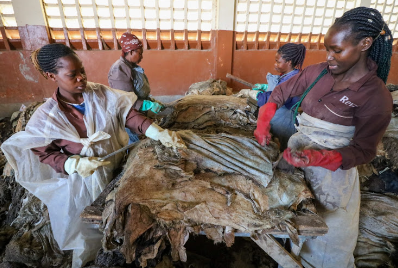The Ministry of Agriculture and Livestock Development has initiated a partnership with the private sector to increase leather production twofold by the end of 2024. This effort aims to generate approximately 100,000 new jobs and boost the manufacturing of leather products, including the current annual production of eight million pairs of shoes in the country.
Jonathan Mueke, Livestock Development Principal Secretary, emphasized the importance of turning the industry into a significant source of employment during a visit to the Kitengela Prison Leather Tannery.
“As we are reviving the leather sector, we found that there is a huge demand for leather finished goods in Kenya, so we are working with the private sector to increase value addition and create jobs,” said Mueke.
The nationwide plan to revive tanneries began with the inspection and upgrading of facilities, starting at the Kitengela tannery. Principal Secretary Mueke outlined further steps, including machinery audits to assess costs for operational readiness.
The sector plans to implement training programs for leather technicians on modern techniques and technologies. Currently, Kenya imports leather and footwear goods valued at approximately Sh9 billion, aiming to reverse this trend with renewed government focus.
The Kenya Leather Development Council reports 15 tanneries nationwide, with plans to establish more treatment plants and industry clusters in various regions to enhance market linkages. The leather sub-sector currently employs around 17,000 people directly, split between formal and informal sectors across tanneries, leather goods, and footwear manufacturing.
Recent data from the Kenya National Bureau of Statistics shows significant growth in the leather and related products sub-sector, with a 21.7% increase in 2023 compared to 2.4% in 2022.
“The increase in leather and related products was mainly attributed to a 27.5 per cent increase in production of footwear with uppers of leather,” KNBS said.
In addition, the production of finished leather such handbags, wallets, shoes, among others, as expanded by 19.4 per cent, during the same period.
In contrast, the jobs in the leather value chain contracted by 19 per cent to 1,303 persons in 2023,mainly attributed to the challenges such as production costs.
Experts had projected that the global leather goods market will experience a growth rate of 6.2 per cent between 2020 and 2025.



